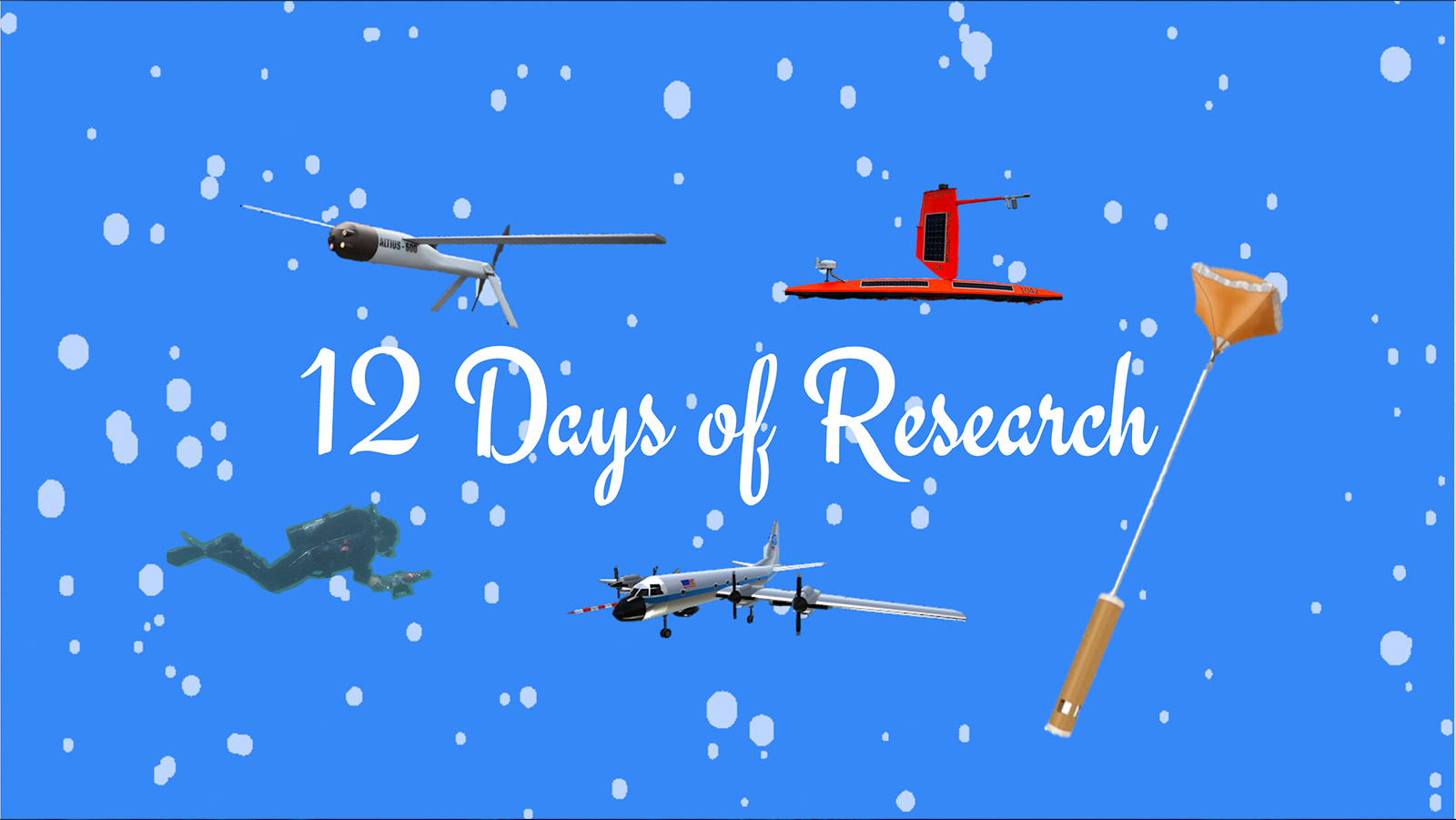Happy Holidays to all! As we close out 2023, join us as we look back at some of our top research highlights this year! From responding to heat waves to setting records and launching new tech, our dedicated team continues to push the boundary in an effort to support NOAA’s mission to build a climate-ready nation.
DAY 1: Glider Program
The 2023 hurricane season marked 10 years of #AOML underwater glider deployments.
DAY 2: 2023 Hurricane Season Recap
This year AOML and NOAA’s Aircraft Operations Center flew and supported 54 research and operational missions on NOAA Hurricane Hunter aircraft.
Day 3: Coral Bleaching Event
Last summer, coral reefs throughout the Florida Keys experienced a severe bleaching event due to a marine heatwave, and our scientists dove into action.
DAY 4: Black Swift Coordinated Drone Effort
During the 2023 hurricane season, NOAA hurricane researchers successfully deployed a new uncrewed aircraft system (UAS) into Tropical Storm Tammy.
DAY 5: Photomosaic Surveys
Scientists at AOML are tracking changes in the physical structures of coral reefs with photomosaic surveys.
DAY 6: Hurricane Analysis and Forecast System (HAFS)
The new NOAA hurricane model, created here at AOML, was successfully transitioned to operational use for the National Hurricane Center.
DAY 7: Sargassum Bloom
This summer, scientists at AOML jumped into action to respond to a large Sargassum bloom in the Atlantic!
DAY 8: AOML Fieldwork
This year’s fieldwork included deployment of ocean instrumentation, coral monitoring, hurricane flights, and more!
DAY 9: Global Drifter Program
This year, the Global Drifter Program at AOML launched a new scientific data server, called ERDDAP.
DAY 10: Florida Regional Ecosystems Stressors Collaborative Assessment (FRESCA)
In November, NOAA announced fundings for a bold and unprecedented new effort co-led by AOML and University of Miami scientists.
DAY 11: NOAA’s Guinness World Records
The 2024 edition of the Guinness World Records book recognizes NOAA and industry partners with two world records!
DAY 12: The Sediment Trap Project
Scientists at AOML and U.S. Geological Survey are using sediment traps to capture a time series of deep ocean particles.
Make sure to follow us on all of our social media platforms to stay up to date on our research throughout the year!
Instagram:@noaa_aoml
Facebook: @noaaaoml
Twitter: @NOAA_AOML
